Stories
The Trend for Transparency
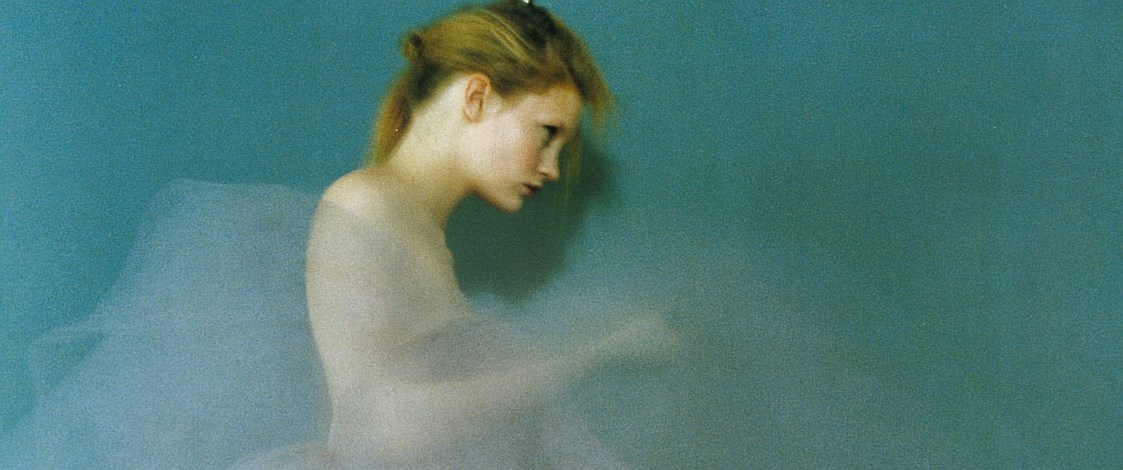
1997 was The Year of Sheer, on the international catwalks and in New Zealand. It wasn’t the first time in the Nineties that designers ventured into the realm of see-through clothing – nor would it be the last - but in 1997 the trend really took hold.
Foremost among the local designers who picked up on the transparent theme for their 1997 spring/summer collections were Tanya Carlson, Marilyn Sainty, Wallace Rose, Glory, State of Grace, Catalyst (a High Society label), DNA and Zambesi.
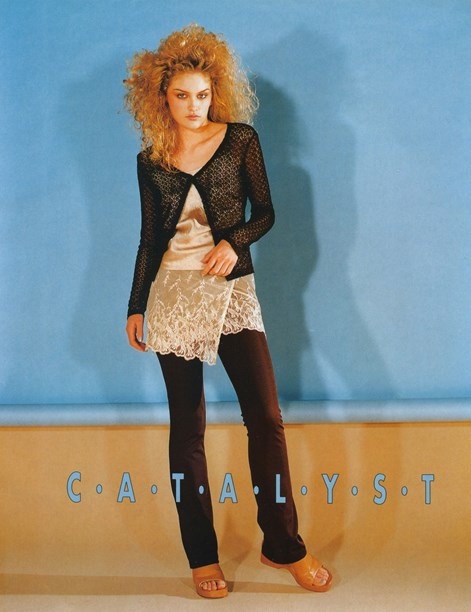
Catalyst lace cardigan and nude satin top layered over a wrap mini-skirt and straight pants. 1997.
When confronted for the first time with sheer clothing, most women took one look and gasped. It was a natural reaction. No matter how beautiful the fabrics - flocked georgettes, embroidered tulle, wispy chiffons, stretch lace, floral organzas – you could see right through them.
1997 Australian Fashion Week was a veritable nude-fest. Models took to the catwalk wearing nothing but a G-string under dresses of varying degrees of transparency, leaving little to the imagination. Further afield, designers such as Armani, Prada, Valentino and Versace showed more restraint. Their message? It’s not necessary to bare it all.

Sheer top by Wallace Rose photographed on the runway, Australian Fashion Week 1997.
Generally speaking, designers here agreed that some form of undergarment was essential.
"On the catwalk is one thing," noted Angela Wickstead. "Putting the look into our own lifestyles is very different." Angela designed opaque silk slips to wear under her flowered sheer dresses and heavy silk crepe or lightweight damask coats to slip over the top.
Zambesi’s Liz Findlay, whose collection included sheer beaded tabards and ethereal dresses and shirts embroidered with flowers, said it wasn’t a reality to look naked. "A lot of what is done on the catwalk is for shock value. Women aren’t expected to do the same in real life."
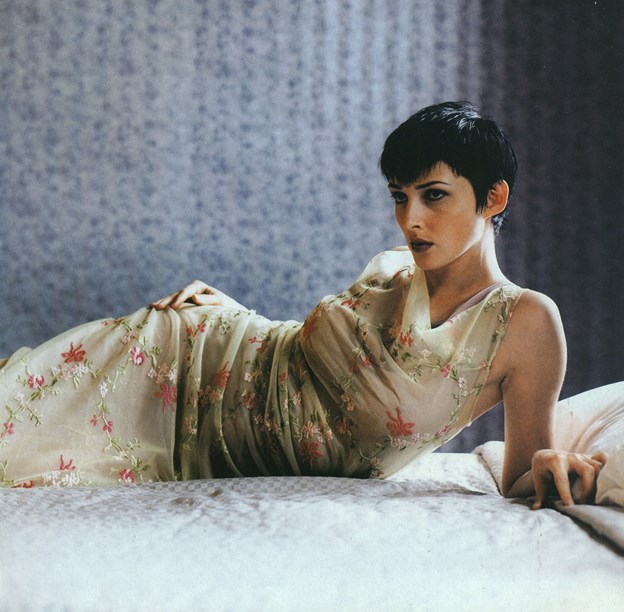
Zambesi sheer embroidered floral dress with cowl-neck worn over a muted pink georgette slip dress. Fashion Quarterly 1997.
For Marilyn Sainty, it was also a question of age. As she put it, "to wear sheer 'sheer' requires a young bottom, young everything!"
With the acceptance of underwear as outerwear now widespread, thanks in part to the influence of Jean Paul Gaultier and Madonna, attitudes toward what constituted decent and indecent exposure had become more liberal. When Elizabeth Taylor appeared in the 1958 movie Cat On A Hot Tin Roof in a skimpy slip it was considered highly improper, but 40 years later the slip was not only meant to be seen, it was integral to the see-through look. Layered under sheer dresses, opaque slips offered a modicum of modesty.
Bendon cut satin slips on the bias to provide a better fit, as did Cupid Lingerie, an upmarket label launched in 1995 by Auckland Institute of Technology apparel graduates Tanja Zylstra and Nicola Kingston. In her summer collection, Teri Johnson of Glory included halter-neck slip dresses in acetate and rayon to wear under her diaphanous dresses and shirts. State of Grace went one step further, designing a special range of underwear to complement the label’s feminine confections of embroidered silk chiffon, floral ruched organza and tulle. "We’re doing black and flesh-coloured satin slips and camisoles," said State of Grace designer Carolyn Church, "and little knickers that can also be worn on their own as shorts."

Pleated georgette slip dress by Teri Johnson for Glory, 1994. Image © Teri Johnson.
Other items on the underwear A-List were body stockings, old-fashioned stitched bras, seamless microfibre bras and boy-cut-leg briefs. Because they gave the illusion of nudity, flesh tones were a popular choice.
The level of exposure was also orchestrated by the elaborate embroideries, flocking or beading on the sheer materials the outer garments were made of, densely and strategically applied to conceal more than they revealed. So intrinsic was this embellishment to the look of the garment, silhouettes were kept relatively simple with no need for fussy details or excess ornamentation.
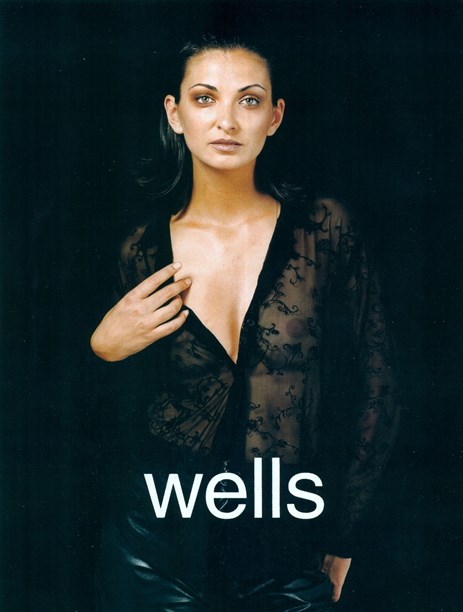
Wells (formerly Dreamgirls) sheer embroidered top teamed with black leather pants, 1998.
Plain sheer fabrics, most notably chiffon, allowed for more design experimentation. This was seen mainly in evening-wear, in long dresses with petal-like layered skirts or fluttery handkerchief hems.
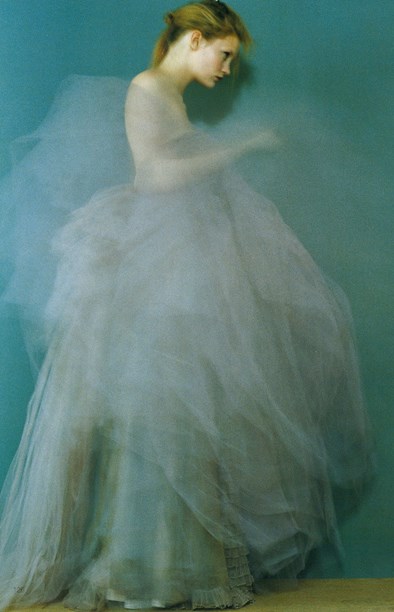
Diaphanous tulle evening gown by Tanya Carlson. Photographed in Paris for Fashion Quarterly, autumn 1998.
When it came to colour, certain designers displayed a strong preference for black. Tanya Carlson was among those who took their cue from overseas and opted for softer shades. Her appearance in the 1997 Wella Fashion Collections was her first in a major show and her use of antique rose and sage-coloured lace and butterfly embroidered tulle reflected her romantic outlook. When she revisited the theme of sheer in 2003 with her 'Sweet Child' collection, an homage to rock royalty, her approach was more risqué.
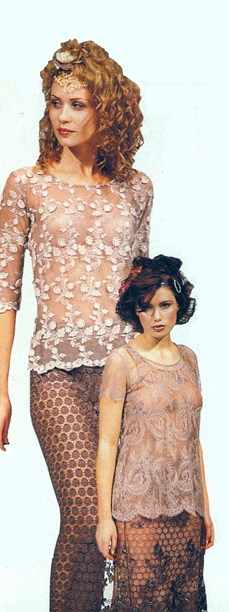
Embroidered lace and tulle tops and skirts from Tanya Carlson debut collection, summer 1997.
To balance the fragility of the fabrics, cosmetics companies created special lines of light-textured, light-coloured makeup, and New Zealand beauty counters were well-stocked with the requisite items. There was even a fragrance that formed part of the narrative. Launched the year before, Givenchy’s Organza arrived here in 1997 dressed, not unexpectedly, given the name, in a sheer pleated gown.
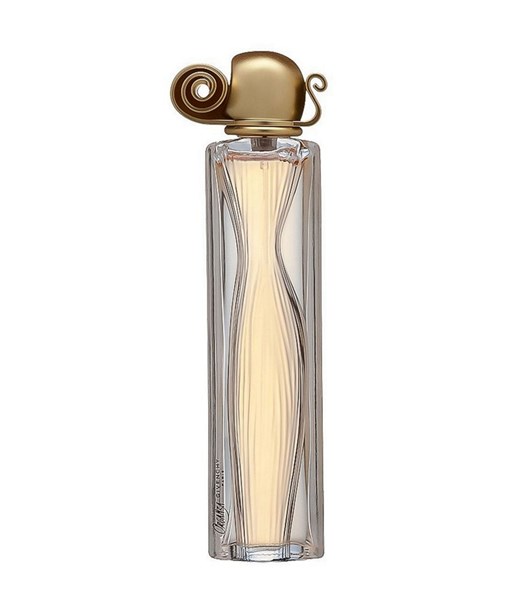
Organza fragrance by Givenchy, launched in New Zealand in 1997.
How to wear sheer and with what was a hot topic of conversation. Karen Walker, who devoted a quarter of her summer range to variations on the tank top in plain or screen-printed lightweight stretch sheers, said that she felt women had become less wary of wearing sheer clothing than they had been a few years earlier. "They used to be very cautious but that’s gone now."
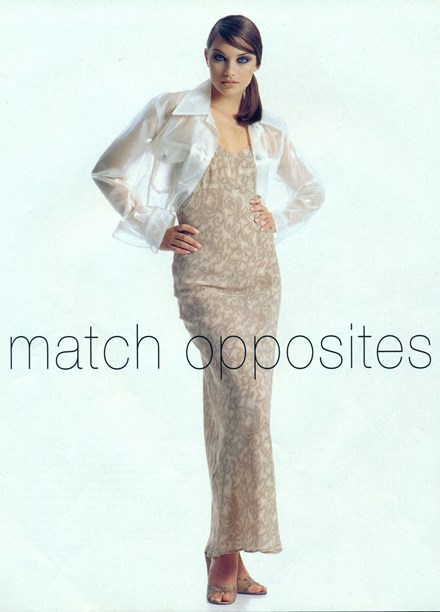
Sheer pieces were often worn together. Streetlife see-through plastic bomber jacket and bias-cut, ankle-length dress by Zambesi. Fashion Quarterly 1995. Image © Fashion Quarterly.
Kate Sylvester envisaged the short hand-painted silk organza dresses she designed that summer being worn over pedal-pushers, boot-leg, wide-leg or Capri pants.
Other popular options included layering two or three sheer dresses in different colours and lengths one over the other or teaming a sheer top with a structured jacket. Sheer shirts, improvising as jackets, were worn over opaque slip dresses on the street, swimsuits on the beach.
Two decades later, the now-you-see-it, now-you-don’t ambiguity of transparent fashion continues to exert its pull, most recently in the 2018 spring/summer collections of designers here and overseas.

Cherry red embroidered lace dress with nylon mesh under-slip. Kate Sylvester, summer 2018. Image © Kate Sylvester.
Pretty, not provocative, sums up the local approach – nude pleated organza at Karen Walker, flower-strewn sheers in bright colours at Kate Sylvester and, at Trelise Cooper, a pastel palette of filmy florals and intricacies of embroidery and lace.

Embroidered tulle chemise dress (left) and embroidered pleated tulle skirt and vintage silk top (right). Trelise Cooper, summer 2018.
Zambesi’s take on the theme is more capricious – non-gender-specific trench-coats in see-through polyester and silk organza.
Text by Cecilie Geary.
Last published August 2018.